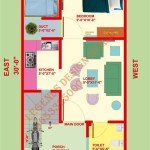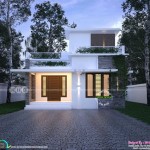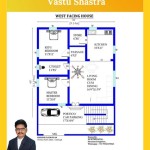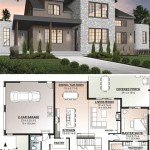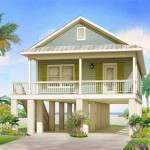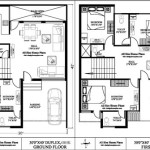Low-Cost Energy-Efficient House Plans
Constructing a new home presents an excellent opportunity to prioritize energy efficiency from the outset. Incorporating energy-saving features during the planning phase can significantly reduce long-term energy consumption and utility costs, often with minimal upfront investment. Exploring low-cost energy-efficient house plans offers homeowners the potential to enjoy both comfortable living and financial savings.
Several key design elements contribute to energy efficiency in home construction. Careful consideration of these elements during the planning process can maximize energy savings. A primary factor is the home's orientation on the building site. Optimizing solar gain in the winter and minimizing it during the summer can reduce reliance on heating and cooling systems. This can be achieved by positioning the longest sides of the house to face south (in the northern hemisphere) to maximize sunlight exposure during colder months.
Insulation plays a crucial role in maintaining a consistent indoor temperature and reducing energy loss. Adequate insulation in walls, roofs, and floors helps prevent heat transfer, keeping the house warm in the winter and cool in the summer. Different insulation materials offer varying levels of thermal resistance, or R-value. Higher R-values indicate greater insulation effectiveness. Selecting appropriate insulation materials for specific climate conditions can optimize energy performance.
Window selection significantly impacts a home's energy efficiency. Energy-efficient windows, such as double- or triple-paned windows with low-E coatings, minimize heat transfer. Low-E coatings reflect infrared radiation, reducing heat gain in the summer and heat loss in the winter. The placement and size of windows also influence energy efficiency. Strategically positioned windows can maximize natural light and ventilation, reducing the need for artificial lighting and mechanical ventilation.
Air sealing is a cost-effective method for improving energy efficiency. Properly sealing air leaks around windows, doors, and other openings in the building envelope prevents drafts and reduces energy waste. Caulking and weatherstripping are simple, affordable solutions for sealing air leaks and improving overall energy performance.
Choosing energy-efficient appliances and lighting fixtures can further reduce energy consumption. Energy Star-rated appliances and LED lighting use significantly less energy than conventional options. While the initial cost may be slightly higher, the long-term energy savings often outweigh the upfront investment.
Proper ventilation is essential for maintaining indoor air quality and reducing moisture buildup, which can contribute to mold growth and structural damage. Mechanical ventilation systems, such as heat recovery ventilators (HRVs) and energy recovery ventilators (ERVs), provide controlled ventilation while minimizing energy loss. These systems exchange stale indoor air with fresh outdoor air while recovering heat or both heat and moisture, improving overall energy efficiency.
Utilizing renewable energy sources, such as solar photovoltaic (PV) panels, can further enhance a home's energy efficiency and reduce reliance on fossil fuels. Solar PV panels convert sunlight into electricity, which can be used to power the home or fed back into the electrical grid. While the initial investment for solar panels can be significant, various incentives, such as tax credits and rebates, are often available to offset the cost.
Selecting building materials with high thermal mass, such as concrete or brick, can help regulate indoor temperatures. These materials absorb and store heat during the day and release it at night, reducing temperature fluctuations and the need for heating and cooling.
Designing a smaller, more compact home can also contribute to energy efficiency. A smaller footprint generally requires less energy to heat and cool. Efficient floor plans that minimize wasted space can further optimize energy performance.
Consulting with a qualified architect or energy consultant can provide valuable insights into designing and building a low-cost energy-efficient home. These professionals can assess the specific climate conditions and site characteristics to recommend optimal design strategies and building materials for maximizing energy efficiency.
Numerous resources are available to assist homeowners in finding and implementing low-cost energy-efficient house plans. Online databases and publications offer a wide variety of pre-designed plans that incorporate energy-saving features. These resources often provide detailed information on energy performance, building materials, and construction techniques.
Implementing low-cost energy-efficient strategies during the planning and construction phases of a new home can yield significant long-term benefits. Reduced energy consumption translates to lower utility bills and a smaller environmental footprint. By prioritizing energy efficiency, homeowners can enjoy both financial savings and a more comfortable, sustainable living environment.

Eco Design Energy Efficient Homes Greenmatch Co

20 Ways To Make Your Home More Energy Efficient Terra Therma

How Do We Define Net Zero Energy More Importantly Can Work Towards As A Standard Build Team Blog

Energy Efficient House Design

How To Build An Energy Efficient Home

Energy Efficient Home Design Plans Cad Pro

Colin Usher S Four Bedroom House In West Kirby Costs Just 15 A Year To Run Daily Mail

Energy Efficient Home Things To Consider Perry Homes

Energy Efficient House Plans Developed By The Architects

Savings With Energy Efficient House Design E Designs
Related Posts

